|
Temperatures are topping 100. It’s so bright outside your eyes hurt. Life is an endless cycle of going from your air-conditioned house to your air-conditioned car to your air-conditioned job. And back again. Unless you’re up at O-dark thirty, it’s hot and bright across the U.S. Southwest and California right now. If you live in the Southeast you’re dripping with humidity too. How do you escape the heat? 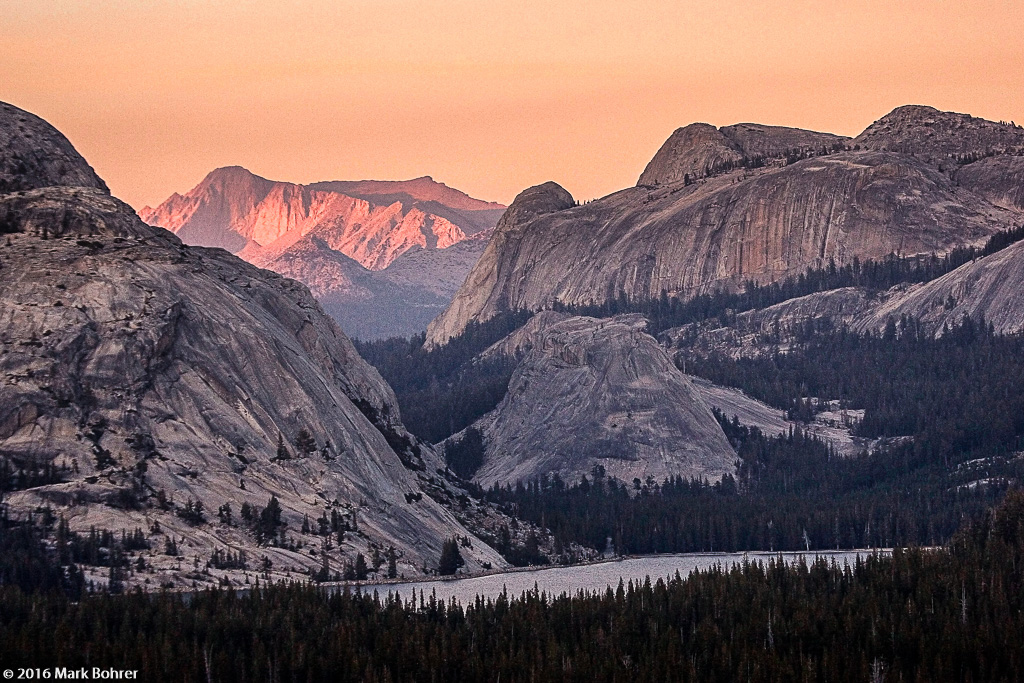 Tenaya Lake and Eastern Sierra high country near Olmsted Point, Yosemite National Park Head For The High Country There are gorgeous mountains within a couple days drive from almost anywhere in North America. From Albuquerque, I can be in the forested Sangre de Cristo range or the Jemez Mountains supervolcano after a two-hour drive or less. That drive gets me at least 10-15 degrees cooler, and shows me endless ridges, summits and hiking trails through them. Ski areas especially are great options for hiking and summer cooling. I head to Ski Santa Fe when it’s hot. I don’t mind if I sweat in comfortable temperatures at high elevation. If I’m feeling lazy, I can stay in Albuquerque and take the tram to the top of the Sandias. Our dogs Daisy and Buzz love being outside and cool when it’s too hot lower down. 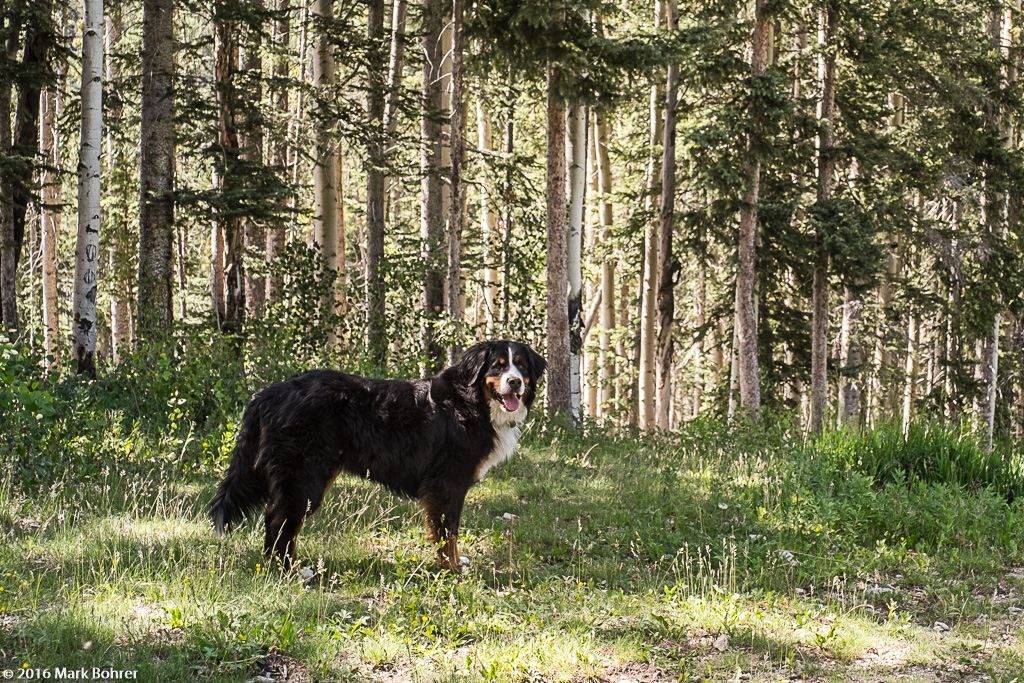 Daisy enjoys cool weather at Ski Santa Fe, New Mexico 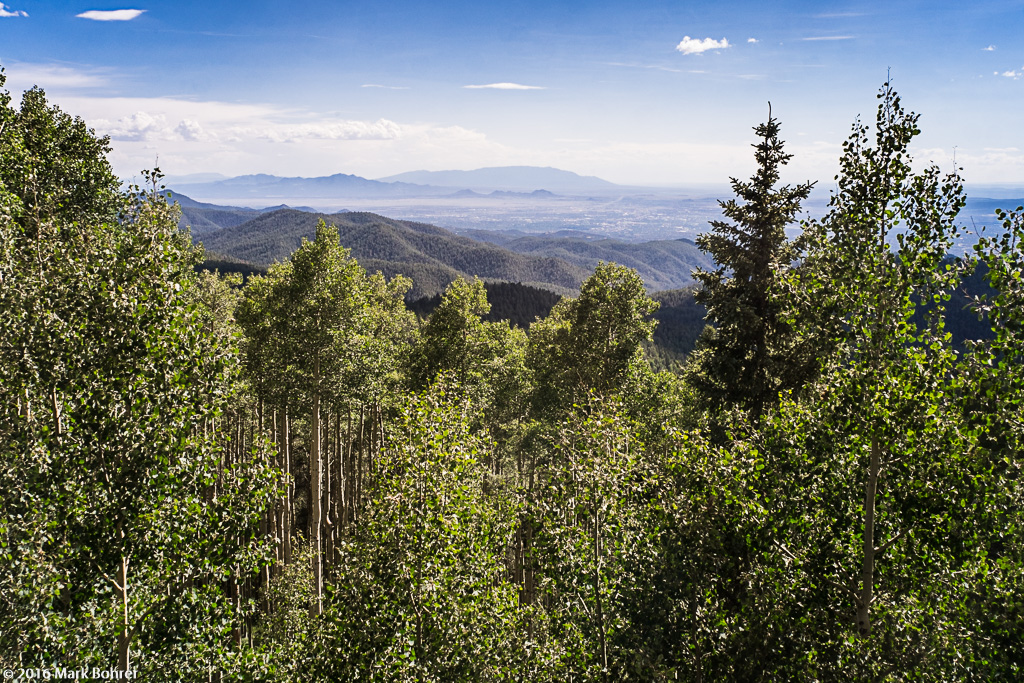 Road view near Ski Santa Fe, New Mexico California Mountain Escapes You can be in Mammoth Lakes or California’s Mono Lake within hours from Los Angeles or San Francisco. You’ll avoid the tourist mobs in Yosemite Valley and see unusual volcanic features while you’re at it. Mono Lake’s Negit Island looks like a wizard’s hat that blew into the middle of the lake and collapsed. The Island formed from several eruptions relatively recently – the last was about 200 years ago. 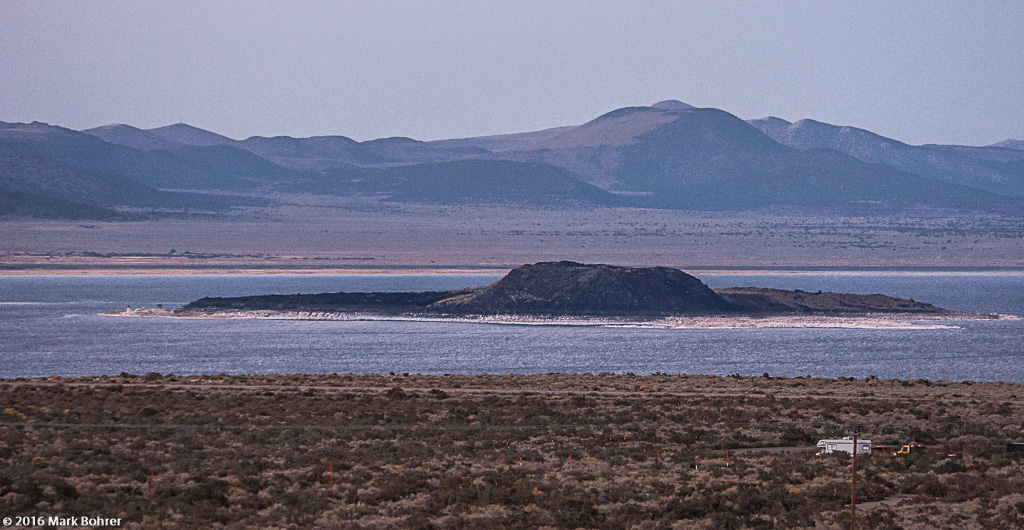 Negit Island, Mono Lake, California Mono Lake South Tufa is excellent for bird and small mammal photography in surreal stone tufa towers. The towers form from dissolved minerals squirted straight up by springs beneath the lake. Abundant plant and insect life attract a variety of animals to the area. 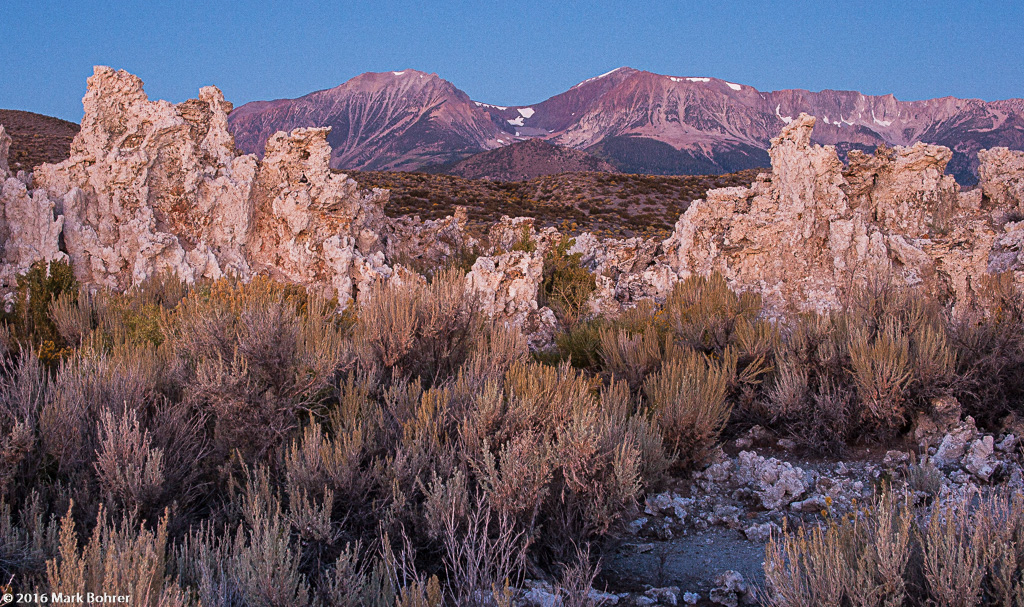 Mono Lake South Tufa sunrise, California 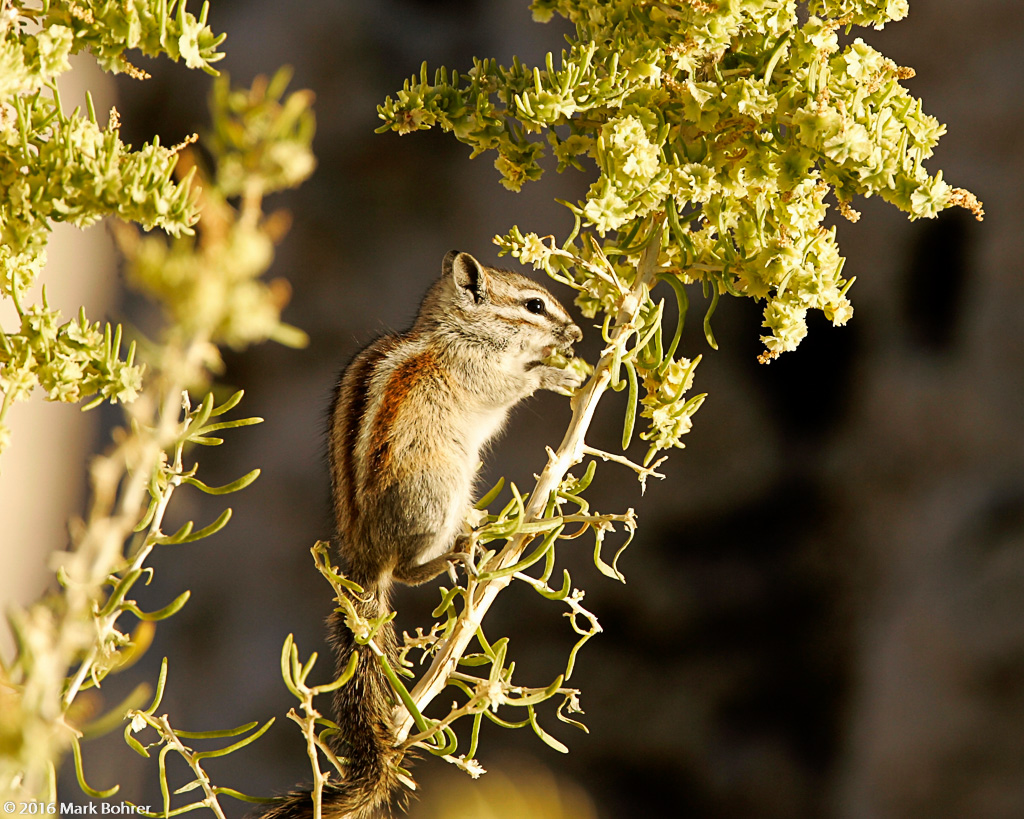 Least chipmunk, Mono Lake South Tufa, California Bypass Yosemite Valley You can bypass Yosemite Valley and find solitude on the east side of the park. The trailhead for Mono Pass is off Highway 120, about 14 miles west of Lee Vining and Mono Lake. This hike does some gradual climbing, but rewards you with views of the Eastern Sierras and a crop of young Belding’s ground squirrels in June, July, and early August. 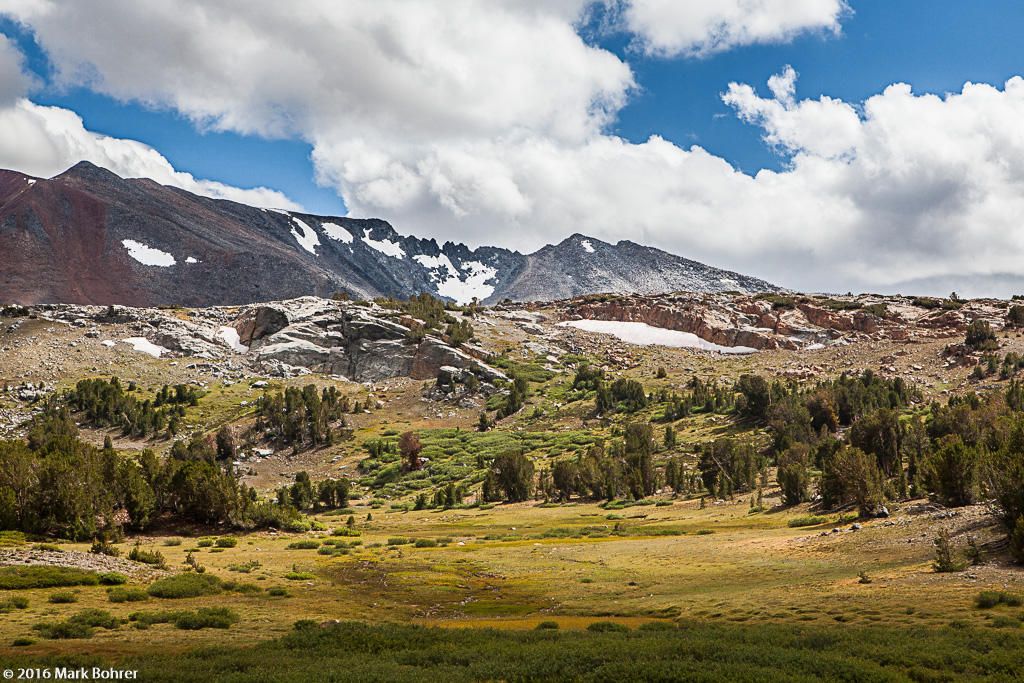 Mono Pass Trail view, Yosemite National Park 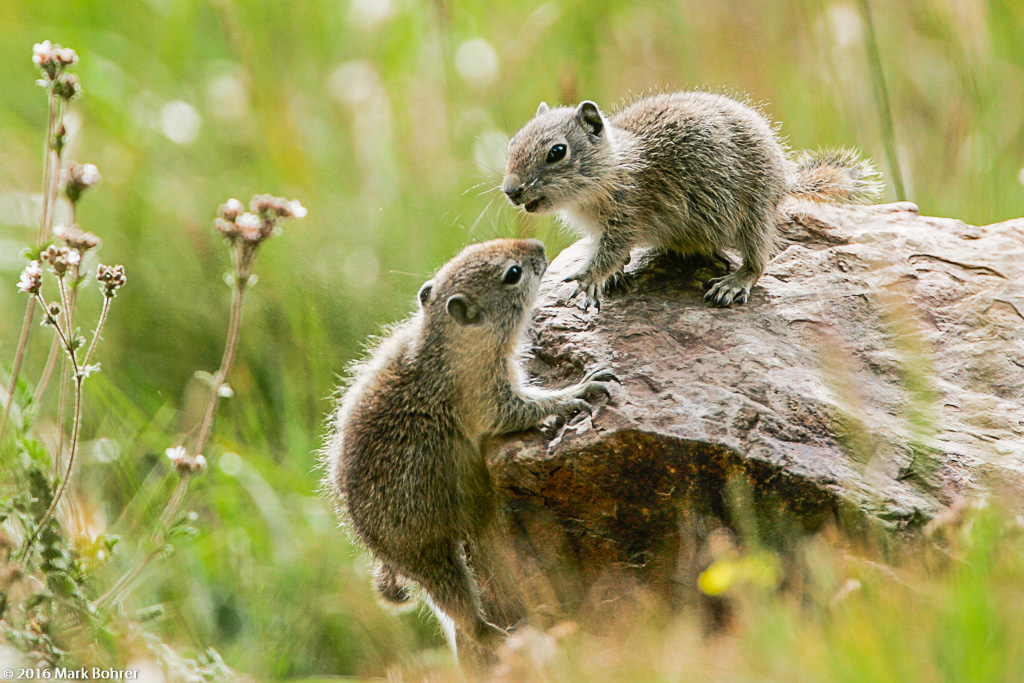 Young Belding’s ground squirrels, Mono Pass Trail, Yosemite National Park Colorado Choices You have many mountain choices in Colorado. Just heading up into the Front Range from Denver or Colorado Springs cools you off, but driving a bit farther west yields more scenic rewards too. Molas Pass above Durango, the Lizard Head Wilderness north of Rico and Ouray’s Sutton Mine Trail all have excellent hiking with great food nearby. Chimney Rock is half an hour away from Pagosa Springs, and also offers excellent hiking. You can take a docent-led tour of the ruins at the top. 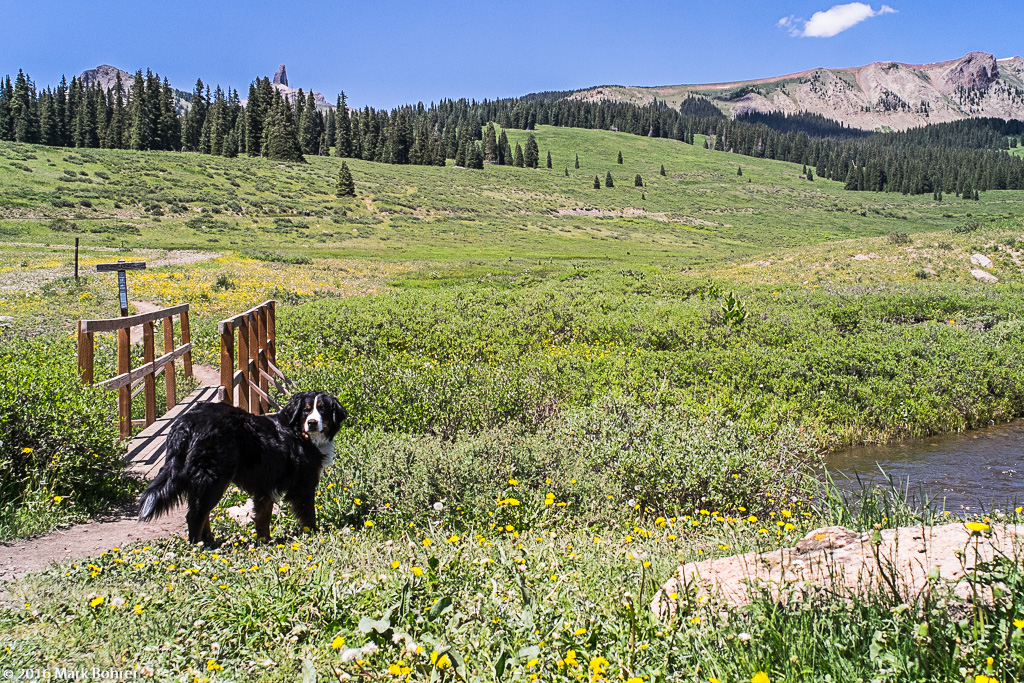 Daisy near Lizard Head Wilderness, Colorado 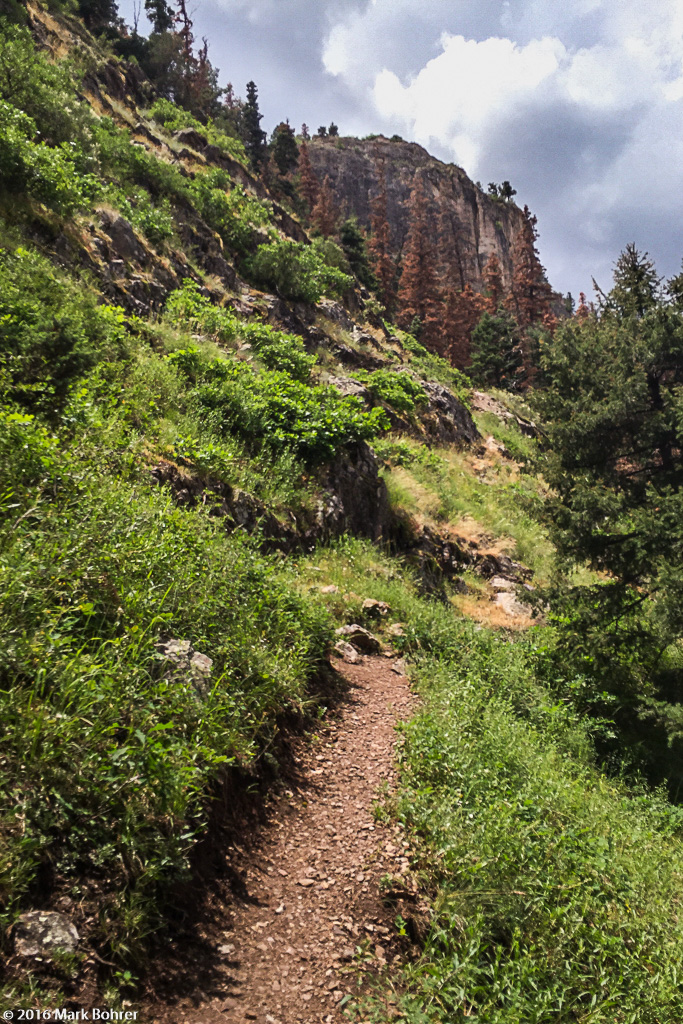 Sutton Mine Trail, Ouray, Colorado 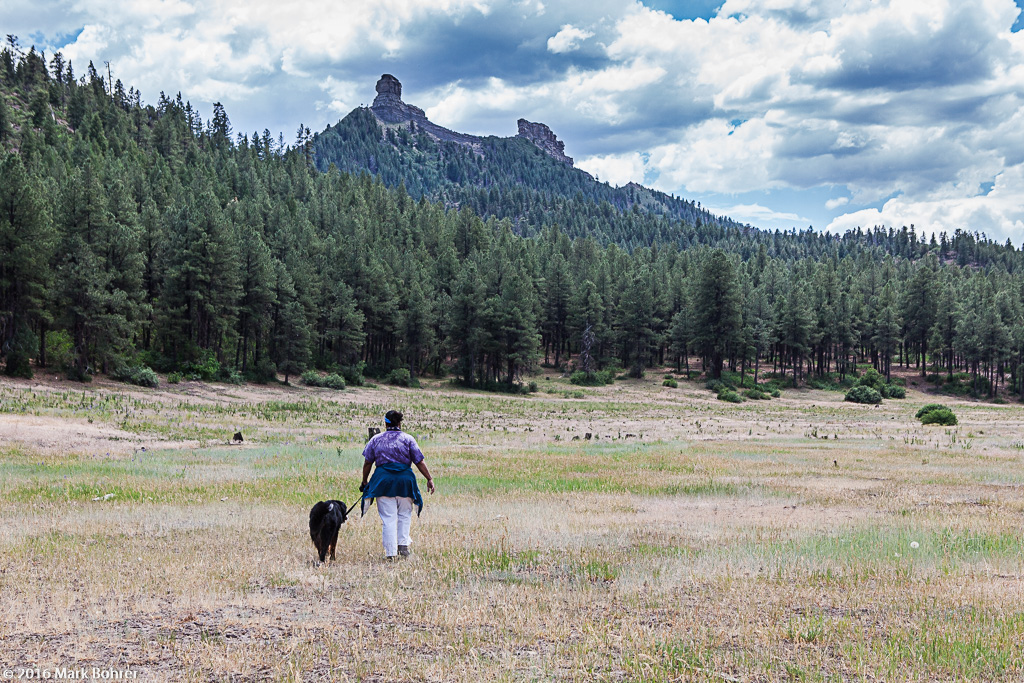 Chimney Rock near Pagosa Springs, Colorado So come on up and cool off. Watch Out For Wildfires But it’s also wildfire season – check for fires before you go, and be responsible with campfires and matches. Many wildfires are human-caused. The US Fires app will show you where the fires are, and give you the latest updates. For Android fans, you can get similar information from Wildfire & Earthquake Tracker. Shot Notes I used a 500mm f/4L lens with a 1.4X teleconverter for ground squirrels on the Mono Pass Trail. This also required carrying a big Gitzo tripod and Wimberley head, altogether a fairly heavy load. Today when I can get away with it, I carry a much lighter and smaller 400mm f/4 DO IS lens for wildlife. On a crop-sensor camera with the teleconverter, I get most of the reach I need for shy subjects. My walk-around cameras are a Fuji X-E2 with adapted Leica-M-mount lenses, and an EOS 5D mk II with EF 24-70mm f/2.8L. When I really want to travel light, I’ll leave the EOS at home and just carry the X-E2 and the lenses. This forces me to zoom with my feet a lot, but I’m still healthy enough to do it. |
(408) 483-3782
Curious about how to shoot ruins?(408) 483-3782

Recent Comments